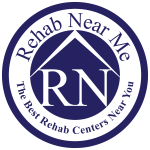Navigation:
[vc_row][vc_column][vc_cta h2="Help Is Only A Phone Call Away" txt_align="center" shape="round" style="flat" color="vista-blue" el_width="sm" use_custom_fonts_h2="true" use_custom_fonts_h4="true"]Call Now 855-227-9535[/vc_cta] Opioid abuse is considered an epidemic and it is still affecting many parts of the US. As a result, lots of people die from an overdose. Opioids are especially dangerous because they are prescribed for pain relief, especially for those who are struggling with moderate to severe pain. But the thing is, opioids aren’t inherently bad. They are only risky if they are taken in large doses, or if the person abuses their prescription. These are actually helpful medications that can relieve discomfort caused by pain. However, opioids also create a sense of euphoria. This is what makes them physically and mentally addictive. The drugs don’t just make you feel good: it also causes respiratory depression, slowing down the functionality of the central nervous system and making it harder for the person to breathe. Because of the potential dangers associated with opioids and opiates, we need to take a closer look at some of the most commonly prescribed substances. Here we will focus on naltrexone. What is it? What does it do? Is it an opiate? Let’s find out.Is Naltrexone an Opiate?
 An opiate is a drug that is naturally derived from the opium poppy plant. It is similar to, but not exactly the same as, opioids. Opioids are the synthetic and semi-synthetic derivatives of the poppy plant. Both types of substances are used as painkillers. They are also the only substances that are classified as “narcotics” in the medical industry. This may confuse some people because the term narcotic is often used in law enforcement to refer to all sorts of illegal drugs and mind-altering substances. In the legal system, narcotics don’t necessarily have to be opiates or opioids. Naltrexone is not actually an opiate. Instead, it is classified as an opiate antagonist, meaning it blocks the effects of opiates and opioids. It works by attaching to the same opioid receptors that these substances usually attach to. This means patients won’t get the pain relieving benefits of opioids, but they will not experience the addictive sensations either. Naltrexone is therefore not a narcotic. It is often used as part of a comprehensive drug addiction treatment program. You can’t even get high from this drug, even if you take large doses. This drug is intended to reduce cravings for opioids and prevent relapse when someone is in detox or drug treatment. Naltrexone is often administered in a clinic, but sometimes they are also given as tablets that can be taken at home. It is also available as a once-monthly injection. This is administered by a medical professional. [maxbutton id="2" ] Remember that opiates and opioids are not dangerous when you take them properly. If you abuse them, you might get addicted—and then Naltrexone will become necessary. If you or someone you love is addicted to a narcotic, look for an addiction treatment facility near you. It is possible for them to get sober again through a combination of medical detox and behavioral therapy. You might see Naltrexone being prescribed to help block the effects of opiates and opioids. Get started on the path to sobriety today.
An opiate is a drug that is naturally derived from the opium poppy plant. It is similar to, but not exactly the same as, opioids. Opioids are the synthetic and semi-synthetic derivatives of the poppy plant. Both types of substances are used as painkillers. They are also the only substances that are classified as “narcotics” in the medical industry. This may confuse some people because the term narcotic is often used in law enforcement to refer to all sorts of illegal drugs and mind-altering substances. In the legal system, narcotics don’t necessarily have to be opiates or opioids. Naltrexone is not actually an opiate. Instead, it is classified as an opiate antagonist, meaning it blocks the effects of opiates and opioids. It works by attaching to the same opioid receptors that these substances usually attach to. This means patients won’t get the pain relieving benefits of opioids, but they will not experience the addictive sensations either. Naltrexone is therefore not a narcotic. It is often used as part of a comprehensive drug addiction treatment program. You can’t even get high from this drug, even if you take large doses. This drug is intended to reduce cravings for opioids and prevent relapse when someone is in detox or drug treatment. Naltrexone is often administered in a clinic, but sometimes they are also given as tablets that can be taken at home. It is also available as a once-monthly injection. This is administered by a medical professional. [maxbutton id="2" ] Remember that opiates and opioids are not dangerous when you take them properly. If you abuse them, you might get addicted—and then Naltrexone will become necessary. If you or someone you love is addicted to a narcotic, look for an addiction treatment facility near you. It is possible for them to get sober again through a combination of medical detox and behavioral therapy. You might see Naltrexone being prescribed to help block the effects of opiates and opioids. Get started on the path to sobriety today. 
Is Naltrexone an Opiate? is courtesy of https://www.rehabnear.me/
from
https://www.rehabnear.me/naltrexone-an-opiate/

No comments:
Post a Comment